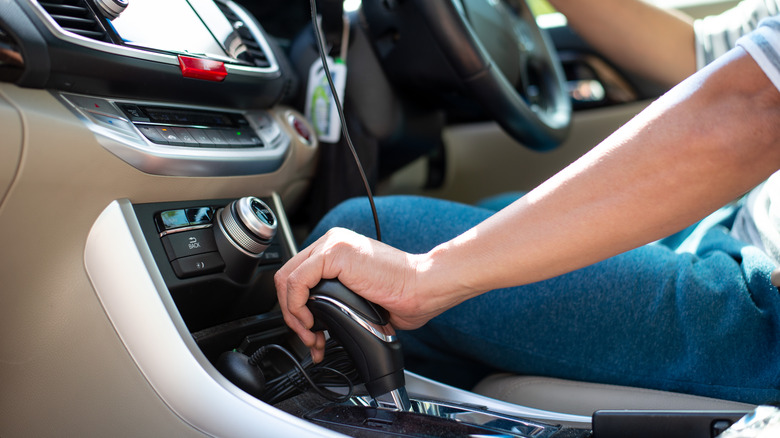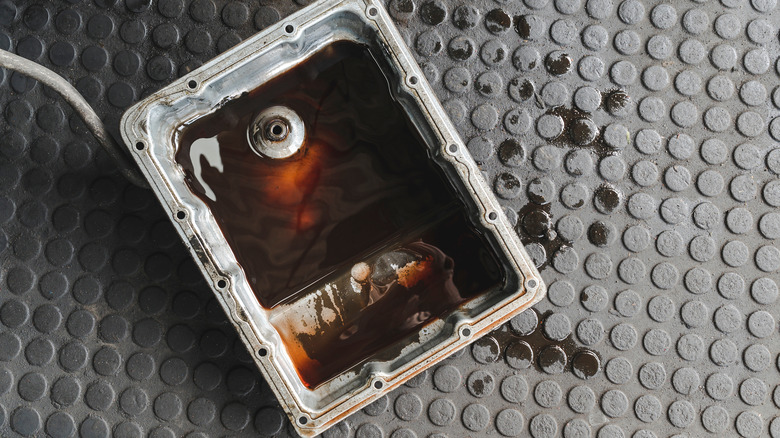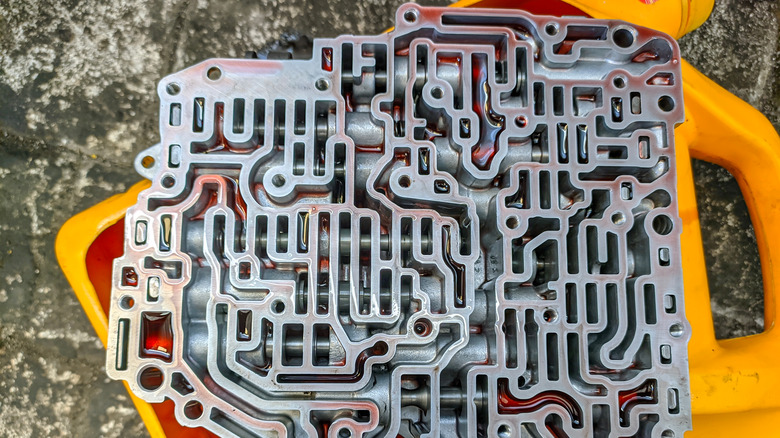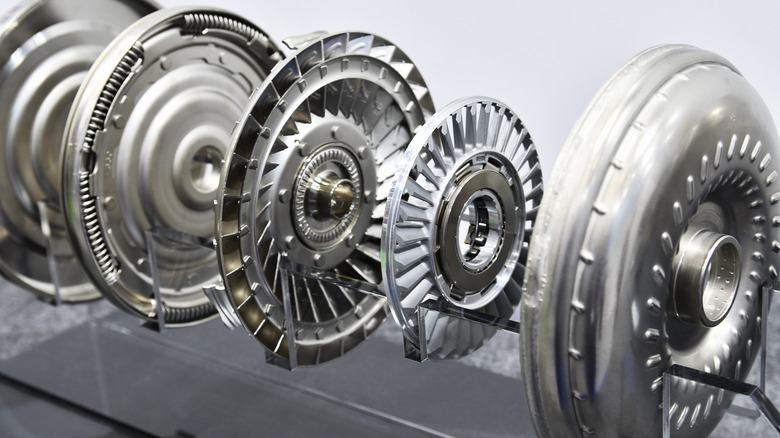3 Reasons Why Your Car Won't Go Into Gear When The Engine Is Running
The automatic transmission has evolved from the standard step-type automatic to dual clutches (DCT) and CVTs (continuously variable transmissions). Still, they all share a complex maze of electrical, hydraulic, and mechanical parts that work together to shift gears with (almost) zero intervention.
Unlike a manual transmission that requires driver skill to match the engine speed with the proper gear, an automatic does it all, and all the driver needs to do is step on the gas pedal. But like a manual transmission, automatic gearboxes need periodic inspection and fluid changes to deliver lasting, problem-free performance.
The most glaring sign that your car's automatic transmission needs attention is when it refuses to go into gear after starting the engine. I once had an eighth-gen Mitsubishi Galant with an ancient four-speed automatic that refused to move after shifting into D or Drive. When it happened, the car wouldn't budge forward even if I stepped on the gas pedal and revved the engine.
The symptom came with an illuminated check engine light, which exacerbated the issue. My mechanic fixed the problem by overhauling the gearbox and refilling the system with fresh automatic transmission fluid. I'm still kicking myself in the back for selling that car, but I want to share insights on why an automatic-equipped car would refuse to shift into gear.
Dirty or contaminated transmission fluid
Like how motor oil protects and keeps an internal combustion engine running smoothly, the automatic transmission fluid or ATF performs the same tasks inside the automatic gearbox. The ATF is a hydraulic fluid that enables the gearbox to change gears by engaging the clutch packs.
If the fluid gets dirty or contaminated, it could affect your car's shifting ability and cause unnecessary vibrations, shuddering, whining noises, or transmission overheating. Moreover, dirty ATF will cause more damage to internal components. If your car refuses to move forward after putting the gear lever in D, shut the engine off, open the hood, and check the fluid level.
Pull out the dipstick and check to see if the fluid is red or reddish. If the ATF is black, brown, or has a burnt smell (healthy ATF has a sweet chemical smell), bring the car to a mechanic or garage and have the fluid drained and replenished immediately. If your vehicle has no transmission dipstick and the odometer has breached 60,000 to 100,000 miles, it probably needs a fluid change, too. There is no such thing as a "lifetime ATF" unless you plan on selling or trading the car once the warranty expires.
In addition, don't forget to check the fluid level once everything is said and done. Too much or too little fluid harms your automatic transmission, so keep this in mind.
Dirty or malfunctioning solenoids, sensors, or valve bodies
Continuously running an automatic transmission with dirty ATF will contaminate the shift solenoids and valve bodies. In layperson's terms, the fluid should flow smoothly inside pressurized tubes to shift gears, and the transmission shift solenoids and valve bodies are what route the fluid to make it happen.
Upon shifting into D or Drive, the transmission should engage first gear. However, with contaminated fluid, malfunctioning solenoids, or bad sensors, it could take time for the vehicle to move or for the first gear to engage. The good news is it's not the end of the world. The bad news is, fixing a broken solenoid or cleaning dirty valve bodies is not a DIY job for the uninitiated.
Moreover, inspecting the solenoids, shift sensors, and valve bodies requires lifting the car and draining all the old ATF. Sometimes, your mechanic might need to remove the gearbox from the engine. Whatever the case, it's better to consult a professional.
Broken mechanicals
If your automatic car refuses to engage into gear, it could point to issues with the torque converter or clutch packs. Again, both are buried deep within the automatic transmission and would require professional repair. However, staying mindful of the ATF condition and fluid levels would prevent the torque converter or clutch packs from incurring premature damage.
On the other hand, manual transmissions are not immune from wear and tear. If you have a manual car and the stick won't go into gear after pressing the clutch pedal, it could be due to a worn clutch, a bad clutch disc, a failing pilot bearing, or wonky synchronizers. Other problems could be a bad shift cable, a leaking hydraulic system, or aging pressure plates.
Whether you have an automatic or manual-equipped vehicle, it's better to consult a mechanic upon the first symptoms of transmission troubles. Nothing could be more frustrating than a transmission not engaging gears when you're on the go, and continuing to drive a car with this condition would only do more harm than good.



